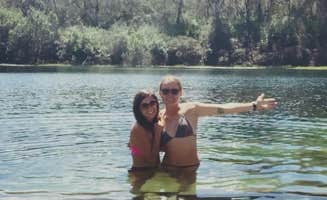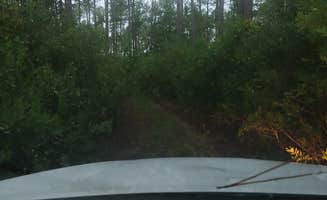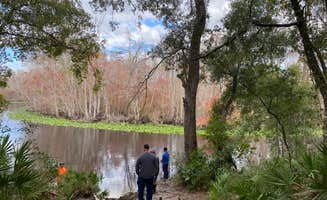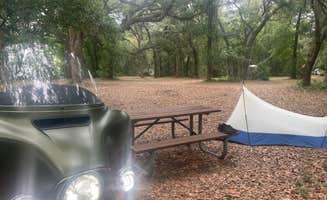Dispersed camping areas around Grand Island, Florida offer primitive sites throughout the Ocala National Forest on public land with minimal or no facilities. Florida's sandy soil and subtropical climate create varied camping conditions across these sites, with seasonal water levels affecting accessibility. Summer temperatures regularly exceed 90°F while winter nights can occasionally drop below freezing, requiring appropriate seasonal preparation.
What to do
Paddling opportunities: The St. Johns River Dispersed Spot provides direct river access for kayaking and canoeing. "Right next to the river and the trees open up so you get a great view of the stars," reports Mike D. about this free camping location.
Fishing excursions: Local fishing opportunities abound for campers willing to explore. At Davenport Landing, Stuart K. notes, "If you are looking to catch and eat your meals, then this will certainly be an added bonus." The emerald-green waters offer both bank fishing and boat access points.
Hiking forest trails: Several dispersed sites connect to forest trails for day hikes. The 1.2-mile Davenport Landing Trail makes "for a medium-grade hike with some interesting history," according to campers. Upper Hillsborough Water Management Area features open grasslands with "great shade trees" for shorter walks between camping and exploring.
What campers like
Remote seclusion: Primitive camping areas offer genuine isolation from developed areas. Adamm A. describes Freak Creek Dispersed Camping as "super secluded and quiet," noting the occasional party groups who "show up to party and then leave."
Natural swimming areas: Several sites feature natural water access for swimming during warmer months. Freak Creek has "a nice creek area where you can swim and or fish if you have the right equipment," according to hilary G., though proper vehicle capabilities are required to reach it.
Wildlife viewing: The forest setting provides opportunities to observe native Florida wildlife. Campers report potential sightings ranging from common to rare species. One visitor to Freak Creek mentioned speaking with someone who "said she has seen a panther" in the area, though such sightings remain uncommon.
What you should know
Vehicle requirements: Many dispersed sites require high-clearance or 4WD vehicles. For Blue Sink, Destiny R. advises "You may need ATV or creative backpacking to get there now," noting access changes due to forestry operations.
Access challenges: Forest roads leading to dispersed camping areas frequently deteriorate, especially after rain. At Freak Creek, one camper warns about "huge deep ruts" and water crossings that went "over my bumper on my lifted Mojave," emphasizing "if you don't have 4wd and recovery gear I wouldn't risk it."
No facilities: Most sites lack all amenities including water, toilets, and trash service. Upper Hillsborough campers note the "lack of trash cans was surprising" and advise visitors to "take your trash with you, leave no trace." Fire rings at several sites show damage from previous use or may be completely absent.
Tips for camping with families
Site selection priority: Choose accessible sites with established camping areas for easier family camping. Trout Lake Primitive Sites offers "a set of primitive spots near lake" with main entry roads that are "packed dirt," providing somewhat more reliable access.
Safety preparation: Cell service ranges from poor to nonexistent at most dispersed sites. One Trout Lake visitor reported "poor cell service even with booster," suggesting families should have emergency plans that don't rely on phone connectivity.
Time of year considerations: Summer heat and insects make spring and fall preferable for family camping. SukiDookie observed being "the only ones there for the weekend, probably because of the summer heat" at Upper Hillsborough, suggesting off-peak timing offers more comfortable conditions.
Tips from RVers
Size limitations: Forest access roads restrict RV size at most dispersed sites. Joe P. from Trout Lake Primitive Sites describes "very narrow trails" where "you will leave with some new pinstripes," indicating tight clearance issues for larger vehicles.
Surface conditions: Sandy and uneven surfaces present challenges for RVs and trailers. At Davenport Landing, David P. reports the "last 100 yards driving back in were very bumpy but no problem with our van. Not sure about a larger RV."
Campsite layout: Some areas offer pull-through options better suited for RVs than back-in sites. Upper Hillsborough Water Management Area provides "large open area with great shade trees" and "easy pull through for RV" sites, according to Scott O., making it more accommodating than densely forested alternatives.





